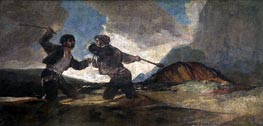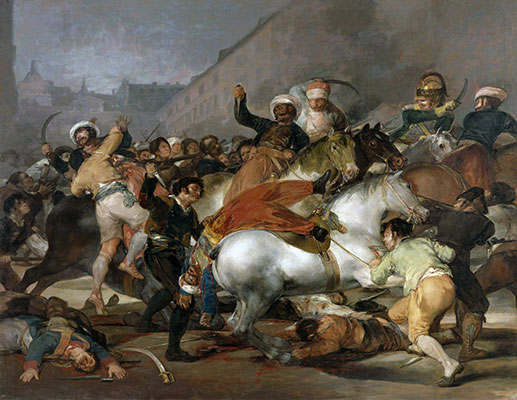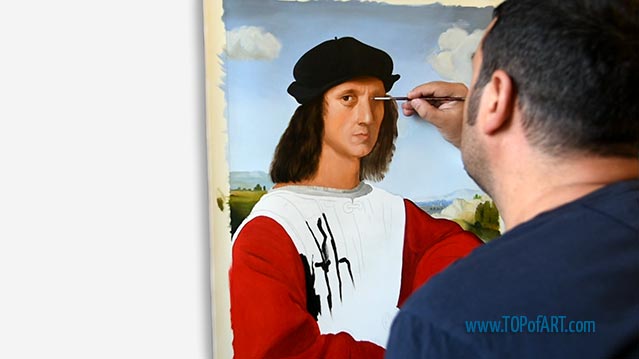The 2nd of May 1808 in Madrid, 1814 Francisco de Goya (1746-1828)
Location: Prado Museum Madrid SpainOriginal Size: 268.5 x 347.5 cm
Own a museum-quality reproduction of The 2nd of May 1808 in Madrid by Goya (1814), exclusively hand-painted in oils on linen canvas by European artists with academic training. Each masterpiece is created with meticulous craftsmanship, capturing the exceptional quality and authentic brushwork of the original painting.
Oil Painting Reproduction
If you want a different size than the offered
Description
Painted by European Аrtists with Academic Education
Museum Quality
+ 4 cm (1.6") Margins for Stretching
Creation Time: 9-10 Weeks
Creation Process
We create our paintings with museum quality and covering the highest academic standards. Once we get your order, it will be entirely hand-painted with oil on canvas. All the materials we use are the highest level, being totally artist graded painting materials and linen canvas.
We will add 1.6" (4 cm) additional blank canvas all over the painting for stretching.
High quality and detailing in every inch are time consuming. The reproduction of Francisco de Goya also needs time to dry in order to be completely ready for shipping, as this is crucial to not be damaged during transportation.
Based on the size, level of detail and complexity we need 9-10 weeks to complete the process.
In case the delivery date needs to be extended in time, or we are overloaded with requests, there will be an email sent to you sharing the new timelines of production and delivery.
TOPofART wants to remind you to keep patient, in order to get you the highest quality, being our mission to fulfill your expectations.
We not stretch and frame our oil paintings due to several reasons:
Painting reproduction is a high quality expensive product, which we cannot risk to damage by sending it being stretched.
Also, there are postal restrictions, regarding the size of the shipment.
Additionally, due to the dimensions of the stretched canvas, the shipment price may exceed the price of the product itself.
You can stretch and frame your painting in your local frame-shop.
Delivery
Once the painting The 2nd of May 1808 in Madrid is ready and dry, it will be shipped to your delivery address. The canvas will be rolled-up in a secure postal tube.
We offer free shipping as well as paid express transportation services.
After adding your artwork to the shopping cart, you will be able to check the delivery price using the Estimate Shipping and Tax tool.
Museum Quality
The paintings we create are only of museum quality. Our academy graduated artists will never allow a compromise in the quality and detail of the ordered painting. TOPofART do not work, and will never allow ourselves to work with low quality studios from the Far East. We are based in Europe, and quality is our highest priority.
1 Reviews
5.00 Overall rating
The scene represents the assault of the people of Madrid on Napoleon's Mameluke horsemen and dragoons.
In the ferocity of the mob there was a seeming renewal of Spain's historical conflict with the Moors, just as there would be again against the Moroccans 125 years after 1808. In the city square, amid clouds of smoke, the Madrid partisans attack the forces of repression without quarter; the latter desperately defend themselves against knives and daggers and point-blank gunshots.
The composition appears to begin outside the picture, to the left, and brakes and diverts to the right (interrupted here, too), utilizing the figures of the running horses, terrified by the wheeling sabres, and of the unhorsed Mameluke who is being stabbed.
The scene leaves aside any traditional composition and is presented as an immediate, momentary vision of a violent event, caught and stopped at a climactic instant. The truncated mode of composing the action became a tradition of its own, especially in the following century in France. The colour is contrasting, broken, often sketchy and spasmodic, in keeping with the general precipitous movement. The faces are summary and fugitive. The horses are massively built and accentuate with their heavy galloping forms the multiplication of converging movements which are directed towards the group under assault.
War aroused Goya's imagination and passionate feelings of humanity. Here he was fascinated by a vision of naked ferocity and produced one of the most burningly emotional works in the history of painting.

The 3rd of May 1808 in Madrid 1814
$5491
$72.05
Francisco de Goya
Original Size:268 x 347 cm
Prado Museum, Madrid, Spain

Fight to the Death with Clubs c.1820/23
$1320
$61.81
Francisco de Goya
Original Size:125 x 261 cm
Prado Museum, Madrid, Spain

Self-Portrait 1815
$1096
$61.81
Francisco de Goya
Original Size:45.8 x 35.6 cm
Prado Museum, Madrid, Spain

The Great He-Goat c.1820/23
$3403
$61.81
Francisco de Goya
Original Size:140.5 x 435.7 cm
Prado Museum, Madrid, Spain

The Milkmaid of Bordeaux c.1825/27
$1132
$83.97
Francisco de Goya
Original Size:74 x 68 cm
Prado Museum, Madrid, Spain

